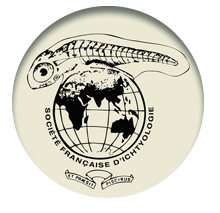Long term monitoring of coral and fish assemblages (1983-2014) in Tiahura reefs, Moorea, French Polynesia
How to cite: Galzin, R., Lecchini, D., Lison de Loma, T., Moritz, C., Parravicini, V., & Siu, G. (2016). Long term monitoring of coral and fish assemblages (1983-2014) in Tiahura reefs, Moorea, French Polynesia. Cybium, 40(1): 31-41. https://doi.org/10.26028/CYBIUM/2016-401-003
Coral reefs are one of the most diverse ecosystems on Earth and sustain millions of people worldwide. However, coral reefs are temporally dynamic and fragile systems subject to ever increasing disturbances of anthoropogenic and natural origins. Understanding the patterns and trajectories of changes through time is urgently needed to estimate the resilience of coral reefs. To ascertain these patterns, we depend on the availability of long-term datasets, which are seldom available. In this study, we present the data set which allowed us to analyse the long-term trends of coral and fish assemblages for the island of Moorea (French Polynesia) from 1983 to 2014, a dataset spanning 32 years, comprising two Acanthaster planci outbreaks (1987 and 2006) and several hurricanes (1982, 1983, 1991 and 2010), on three permanent monitoring sites (quadrats of 50 × 2 m2) located on both fringing and barrier reefs as well as on the outer slope. Coral cover oscillated significantly over time, particularly on the outer slope where it suffered greatly from the effects of A. planci outbreaks and hurricanes. Total fish and commercial fish abundances varied significantly across the three habitats. Prior to 2000, both total fish and herbivorous fish abundances increased on the barrier reef while after this time, numbers began to drop significantly along the outer slope. Species richness for total, commercialized and herbivorous fish increased over the sampling period for all three habitats. There were varied responses amongst species to disturbances on the outer slope over the sampling period: while some tended to disappear for a while before reappearing, others showed a peak in abundance in the middle of the sampling period, and still others increased or decreased continuously or were stable over time. Our results support the view that coral reefs are highly dynamic systems and that different functional groups show different temporal trajectories. While disturbance is probably the major driver for coral cover dynamics, its impact is less obvious for fish, possibly due to their mobility and population dynamics which may mask the effect of disturbance.


